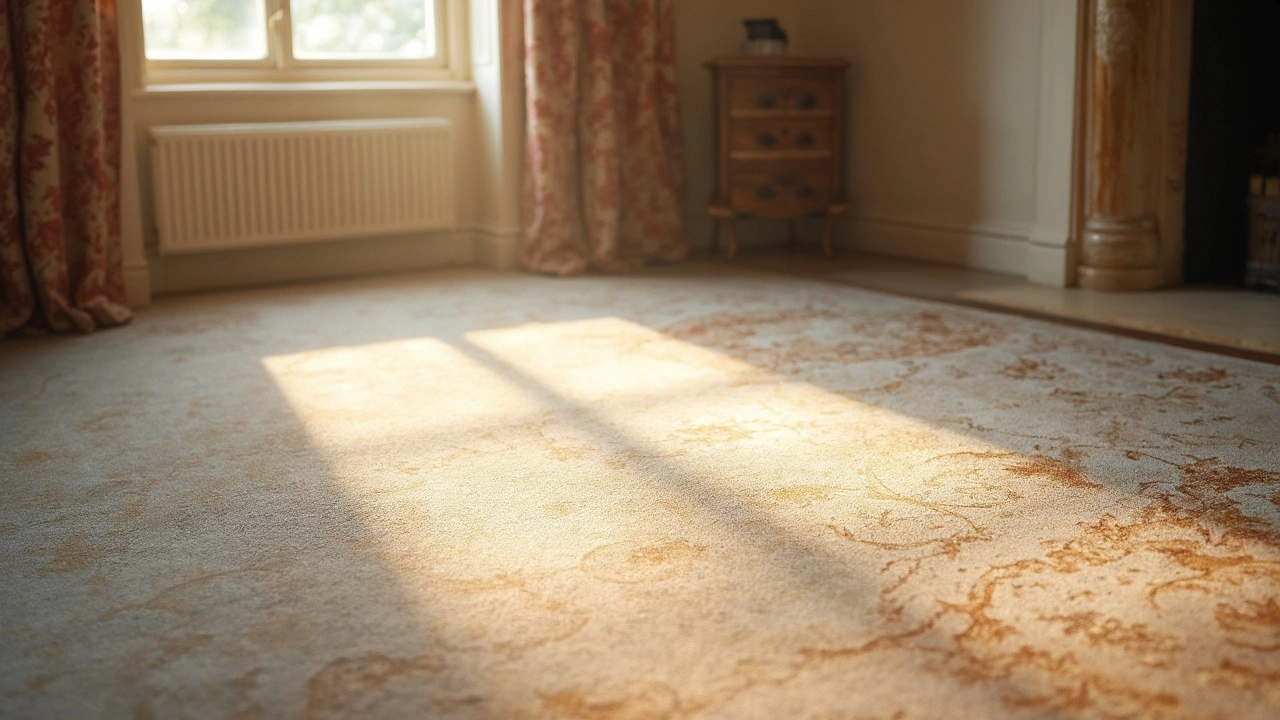Wet Carpet? Fast Fixes, Drying Tips & When to Call a Pro
Spilled water, a burst pipe, or a rainy day leak can leave your carpet soaked in minutes. A wet carpet isn’t just soggy—it can smell, grow mold, and ruin the floor underneath. The good news is you don’t have to wait for a professional to act. With the right steps you can dry, clean, and protect your carpet before the damage gets real.
Why Carpets Get Wet and What Happens Next
Most wet‑carpet problems start from three sources: accidental spills, plumbing leaks, or flooding. When water sits, it pushes into the padding and backing, creating a perfect breeding ground for mold and bacteria. Even a few hours of moisture can cause a musty smell, while longer exposure weakens the fibers and can lead to permanent stains. The faster you react, the less likely you’ll face costly replacements.
Step‑by‑Step: Dry, Clean and Protect Your Carpet
1. Remove the water. Use a wet‑vac or a sturdy mop to soak up as much liquid as possible. Press the vacuum head firmly to pull water from the padding, not just the top layer.
2. Increase airflow. Open windows, set up fans, and point a dehumidifier at the wet spot. If you have a portable air mover, place it a few inches above the carpet and let it run for at least 24‑48 hours. Move the fans around to cover the whole area.
3. Blot, don’t rub. For any remaining damp patches, lay a clean towel on top and press down. Swap the towel when it’s soaked. Rubbing pushes water deeper and can damage fibers.
4. Check the padding. Lift a corner of the carpet. If the padding feels wet or smells sour, it’s time to replace it. A soggy pad will keep the carpet damp and cause mold under the surface.
5. Clean the surface. Mix a cup of white vinegar with a gallon of warm water and lightly spray the area. Vinegar neutralizes odors and discourages mold. After a few minutes, blot with a clean cloth.
6. Apply a carpet protectant. Once dry, spray a light carpet protector spray. It creates a barrier that repels future spills and makes cleaning easier.
7. Inspect for mold. Look for dark spots or a persistent musty smell after 48 hours. If you spot anything, scrub the area with a mix of water and a few drops of tea tree oil, then rinse with clean water.
If the carpet stays damp after 24‑48 hours, or if you notice extensive staining, call a professional carpet cleaning service. They have industrial‑grade fans, extraction machines, and anti‑mold treatments that can save the carpet from permanent damage.
Prevention is the cheapest cure. Place water‑resistant mats under sinks, use a shower curtain in the bathroom, and check pipe seals regularly. A quick glance at potential leak points can stop a wet carpet before it starts.
Wet carpet situations are stressful, but with the right tools and a fast response you can dry, clean, and protect your floor. Keep a wet‑vac, a few fans, and a bottle of vinegar handy, and you’ll be ready the next time water sneaks onto your carpet.

Does Carpet Stay Wet After Steam Cleaning? Here's What You Need to Know
Steam cleaning is a popular way to refresh your carpets, but does it leave them wet for long? Find out how long your carpet might stay damp after a steam cleaning session and learn about factors that influence drying times. We’ll also cover handy tips to speed up the drying process. If you're planning a steam cleaning, this guide will help ensure your carpets dry efficiently.
Read More